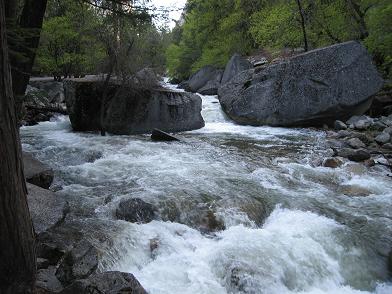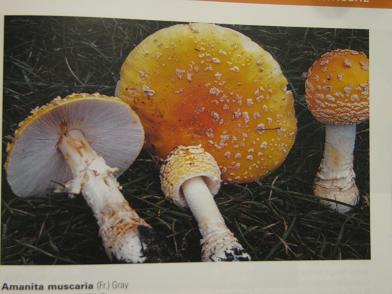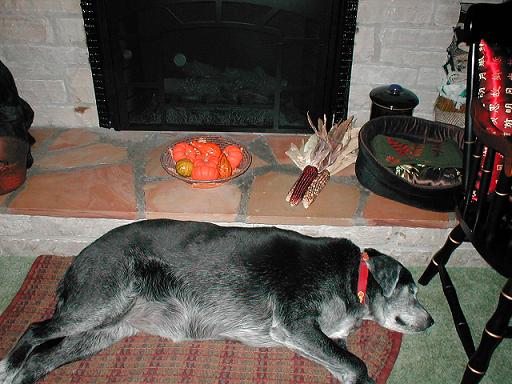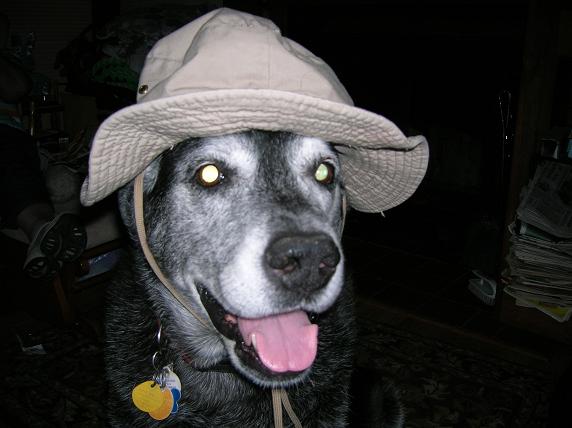Dr. Stephen Johnson is a friend of ours. He is an ecologist who teaches biology at a college in a nearby town. He also writes very well and has had a number of articles published in different wildlife magazines. Because I like his writing, I’m sharing one of his short biographical stories1 I like and find interesting.
My First Red Eft2
There isn’t much else that I remember about the event.3 I couldn’t have been older than seven or eight years. It was some sort of mountaintop social gathering4 in western Virginia5. I recall my mother and grandmother close by6 on a wide open clay trail7. Lots of people milled around8 ahead of us in the distance. There were spruce9 trees to the right and left and a tiny-legged red line10 moved steadily in front of me.
Coincidentally11, I had recently read about red efts in the popular GOLDEN GUIDE12 series and I was always looking for any kind of wildlife, but salamanders13 were special because they seemed so primordial14 and wild. I liked their secrecy15 and the tactics16 it took to find them such as stone and log flipping17. The GOLDEN GUIDE told me that spotted newts18 occurred in Virginia. I could see one, but certainly didn’t expect to. Now I couldn’t believe that I was witnessing one cross this trail before my eyes19 at mid-day. I picked it up and marveled at its muted red20 curvaceous and glistening form21 as my grandmother immediately said, “Put it down. It will hurt you.” I knew better22 and quickly responded, “No, it won’t.” In fact, it could have hurt me if I squeezed23 it or chewed it, but she didn’t know that.
The red eft is a temporary terrestrial phase24 of the spotted newt and is the most likely stage to observe25 because other stages of the animals’ life cycle are aquatic26. The spotted newt is a member of the scientific family Salamandridae27, the family that includes the salamander most important to European cultural mythological history28–the fire salamander29.
I had always been fascinated with the legends30 about the fire salamander. These creatures31 would hide in logs and emerge32 when European villagers brought in the logs and put them in the flaming hearth33. European people apparently believed that the fire had generated34 the salamander.
When I was about ten years old my friends and I went to a tiny creek35 that trickled36 into the James River not far from my home in Richmond37. We flipped rocks, searching for whatever, but delighted in the capture of what are called two-lined salamanders38. I wanted to learn more about them so took one home, much to my mother’s dismay39. I learned that they are quite good climbers40. This one lodged41 itself behind the window unit air conditioner42 and was, of course, never found.
Throughout the 1970s water quality in that little creek deteriorated43 rapidly because of washing machine effluent44 from the houses parallel to45 my home street. I never found another salamander in that creek.
Salamanders continue to fascinate me. I take care of a fire salamander that I rescued46 a few years ago from a pet store. Placing his aquarium47 on a wine rack seemed appropriate to me for his European heritage48. I also care for a tiger salamander and occasionally search for them in forested ponds49 around Iowa. A few years ago I helped a small tiger salamander cross a highway on its way to its breeding pond50.
As I grew older, I became convinced51 that education is important for preserving52 these wild creatures. So just as the GOLDEN GUIDE series helped me marvel53 at the wonder of the red eft, I now try to educate future generations toward a better appreciation of amphibians54. And I still can’t help but look55 under logs and rocks.
Notes:
1. biographical stories: accounts relating to the facts of someone’s life (传记故事).
2. red eft: the common name for the terrestrial phase of an aquatic type of newt, a type of salamander (红水螈,蝾螈的一种,为该水中动物处于陆地生长阶段时的称呼).
3. There isn’t much else that I remember about the event: 关于这件事其他方面就记得不多了。
4. mountaintop social gathering: 山顶聚会
5. Virginia: 弗吉尼亚州
6. close by: not far away (在附近).
7. a wide open clay trail: 空旷地上的一条泥路
8. milled around: moved around a place in different directions without any particular purpose (无目的地乱转).
9. spruce: a type of evergreen, cone bearing tree, typical of that area (云杉).
10. tiny-legged red line: a metaphor describing the appearance of the red eft on the path in front of him (长着很细腿的一条红线,这是个隐喻,指一条红水螈出现在他面前).
11. coincidentally: occurring or existing at the same time or moment (巧合,碰巧).
12. Golden Guide: a series of books for children which gives pictures and descriptions of plants and animals (一种儿童系列丛书,书中有大量的动植物图片和说明).
13. salamander: the name for a group of amphibian animals with four legs, moist skin without scales, and which have several stages in their life cycle, some terrestrial and some aquatic (蝾螈,四脚两栖动物,皮肤湿润无鳞,其生命周期分几个阶段,有陆地和水中阶段).
14. primordial: primitive in appearance and behavior (原始的).
15. secrecy: the process of keeping something secret (秘密).
16. tactics: methods that one uses to achieve something (方法,策略).
17. stone and log flipping: quick turning over of flat stones or logs (很快地翻动石头和木头).
18. spotted newts: a type of small salamander which has spots on its back (有斑点的水螈,一种小蝾螈).
19. before my eyes: meaning that one is surprised to see something right in front of them; an unexpected sight (就在我的眼前,表示看到了意想不到的东西).
20. muted red: dull red, not bright in color (暗红色).
21. its muted red curvaceous and glistening form: 它那暗红色、带曲线美并且很有光泽的样子
22. I knew better: I had better knowledge (我更了解).
23. squeezed: pressed firmly together with your fingers or hand (捏,挤).
24. terrestrial phase: a stage of life lived on land rather than in the water (陆地生活阶段).
25. the most likely stage to observe: 最有可能观察的阶段
26. because other stages of the animals’ life cycle are aquatic: 因为这种动物生长周期的其他阶段都是在水里。
27. Salamandridae: the technical or scientific family name given to the group of organisms called salamanders (蝾螈科,该科动物的正式名称).
28. mythological history: popular folk beliefs (神话记载).
29. fire salamander: a type of salamander typified by a bright red color; in mythological history, thought to have been produced by fire (火蝾螈,一种艳红色的蝾螈,根据神话记载是由火产生的).
30. fascinated with the legends: deeply interested in old, well-known stories (对传说入迷).
31. creatures: living animals (动物).
32. emerge: come out of something; to come out of hiding (出现).
33. flaming hearth: 有烈火燃烧的炉床
34. generated: produced or made by some means (产生).
35. creek: a small stream of moving water (小溪).
36. trickled: flew slowly in drops or in a thin stream (缓缓地流动).
37. Richmond: a large city in the eastern U.S. state of Virginia (美国东部弗吉尼亚州的一个大城市).
38. two lined salamander:身上有两条线的蝾螈
39. dismay: fear, alarm or anxiety because of something having happened (不安,难过).
40. climbers: 攀登者
41. lodged: located or stuck between two or more objects or surfaces (卡住,嵌入).
42. window unit air conditioner: 窗式空调.
43. deteriorated: become worse (恶化,变坏).
44. effluent: liquid waste, especially chemicals or sewage (废水).
45. parallel to: 与……平行
46. rescued: free someone or something from danger, or loss (解救).
47. aquarium: 水族箱,养鱼缸
48. European heritage: 欧洲的遗传
49. forested ponds: small bodies of water surrounded by trees (周围长满树的池塘).
50. breeding pond: the small body of water where organisms give birth to offspring (在那儿繁殖的池塘).
51. convinced: feeling certain that something is true (确信).
52. preserving: keeping in good condition, or keeping alive or from spoiling (保护,保养).
53. marvel: be filled with surprise or astonishment (感到惊讶,钦佩).
54. better appreciation of amphibians: 更加欣赏两栖动物.
55. can’t help but look: feel compelled to look (禁不住要看).




